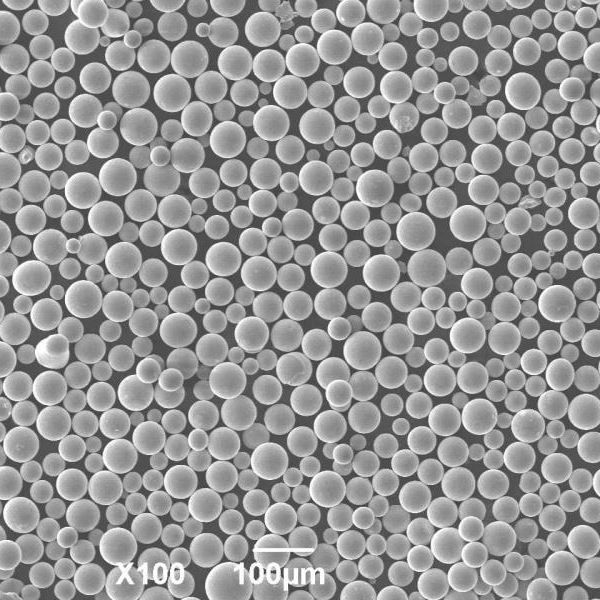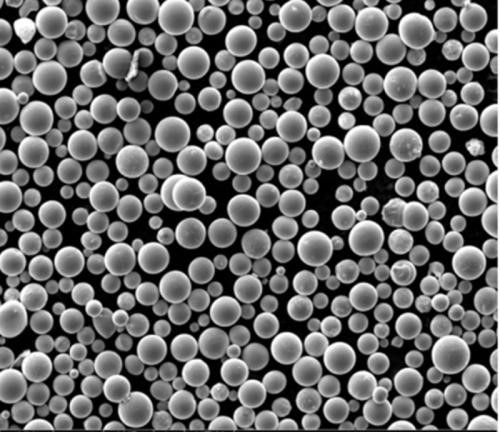FeCoNiCr powder
FeCoNiCr powder refers to an alloy composed of iron (Fe), cobalt (Co), nickel (Ni), and chromium (Cr). The combination of these elements brings forth a host of desirable characteristics, making it an ideal material for additive manufacturing processes. The powder is finely granulated and specifically formulated to enable efficient utilization in 3D printers, where it can be selectively deposited layer by layer to create intricate and complex structures.
Fast Delivery
High sphericity
High Quality
Small MOQ
Share This Product
Product Description
Understanding FeCoNiCr Powder
FeCoNiCr powder refers to an alloy composed of iron (Fe), cobalt (Co), nickel (Ni), and chromium (Cr). The combination of these elements brings forth a host of desirable characteristics, making it an ideal material for additive manufacturing processes. The powder is finely granulated and specifically formulated to enable efficient utilization in 3D printers, where it can be selectively deposited layer by layer to create intricate and complex structures.
Composition and Properties
FeCoNiCr powder exhibits a well-balanced composition, where each element contributes to the overall performance and properties of the alloy. The precise ratios of the elements can vary based on specific requirements and applications. Generally, FeCoNiCr powder consists of approximately 30-45% iron, 10-25% cobalt, 15-30% nickel, and 10-20% chromium. This composition provides the powder with exceptional mechanical strength, corrosion resistance, and thermal stability.
The powder particles possess a fine size distribution, typically ranging from 10 to 50 micrometers. This controlled particle size allows for uniform powder flow during the printing process, ensuring consistent layer deposition and high-quality prints. Furthermore, FeCoNiCr powder exhibits excellent sinterability, enabling the particles to fuse together effectively during post-printing treatments.
Applications in Additive Manufacturing
FeCoNiCr powder has found extensive applications in the field of additive manufacturing, particularly in industries such as aerospace, automotive, healthcare, and energy. Its remarkable properties make it suitable for a wide range of components and parts, including turbine blades, engine components, orthopedic implants, and high-performance tools.
In aerospace, FeCoNiCr powder is utilized to manufacture lightweight yet robust components for aircraft and spacecraft. Its superior strength-to-weight ratio and resistance to high temperatures make it an ideal choice for critical applications that require both durability and performance.
The medical industry has also embraced FeCoNiCr powder due to its biocompatibility and corrosion resistance. It is widely used in the production of implants, such as artificial joints and dental prosthetics. The powder’s ability to create complex geometries and tailored designs allows for personalized and precise medical solutions.
Advantages of FeCoNiCr Powder
- Exceptional Mechanical Properties: FeCoNiCr powder exhibits high tensile strength, excellent hardness, and exceptional wear resistance. These mechanical properties make it suitable for demanding applications that require durability and longevity.
- Corrosion Resistance: The presence of chromium in the alloy composition grants FeCoNiCr powder remarkable resistance against corrosion and oxidation. This property ensures the longevity of the printed parts, especially in environments exposed to moisture or aggressive chemicals.
- Thermal Stability: FeCoNiCr powder retains its mechanical integrity and stability even under elevated temperatures. This attribute is crucial in applications involving high-temperature environments, such as aerospace engines or industrial furnaces.
- Customizability and Design Freedom: Additive manufacturing using FeCoNiCr powder enables intricate designs and complex geometries that are otherwise challenging to achieve through traditional manufacturing processes. This flexibility allows for innovative and optimized designs tailored to specific requirements.
Future Prospects and Research
The utilization of FeCoNiCr powder in additive manufacturing is an evolving field with immense potential. Researchers and industry experts are continuously exploring ways to enhance the alloy’s properties, optimize processing techniques, and expand its applications. Ongoing research focuses on improving the powder’s printability, further enhancing mechanical properties, and investigating its behavior in extreme environments.
As additive manufacturing continues to revolutionize industries worldwide, the future of FeCoNiCr powder appears promising. With advancements in technology and increasing demand for lightweight, high-performance components, this alloy is poised to play a pivotal role in shaping the future of 3D printing and metal fabrication.
Conclusion
FeCoNiCr powder represents a significant advancement in the realm of additive manufacturing. Its unique composition and exceptional properties make it an invaluable resource for the production of complex and high-performance components. With its wide range of applications and the continuous research efforts focused on enhancing its capabilities, FeCoNiCr powder is set to reshape the way we manufacture and design objects. The future possibilities are vast, and this remarkable alloy holds the potential to drive innovation across various industries.
FAQs
Q1. Can FeCoNiCr powder be used in traditional manufacturing processes?
No, FeCoNiCr powder is specifically formulated for additive manufacturing processes, such as 3D printing. Its particle size and composition are optimized for efficient layer deposition and fusion during printing, making it unsuitable for traditional manufacturing techniques.
Q2. Is FeCoNiCr powder suitable for applications involving high temperatures?
Yes, FeCoNiCr powder exhibits excellent thermal stability and can withstand elevated temperatures. This makes it ideal for applications where components are exposed to extreme heat, such as aerospace engines or industrial furnaces.
Q3. What are the advantages of using FeCoNiCr powder in the medical industry?
FeCoNiCr powder offers several advantages in the medical industry. Its biocompatibility, corrosion resistance, and ability to create complex designs make it a preferred choice for manufacturing medical implants, including artificial joints and dental prosthetics.
Q4. Can FeCoNiCr powder be recycled?
Yes, FeCoNiCr powder can be recycled and reused in the additive manufacturing process. Unused powder or post-printing excess can undergo recycling methods to ensure efficient material usage and minimize waste.
Q5. How can I get access to FeCoNiCr powder for my additive manufacturing needs?
To access FeCoNiCr powder, you can explore reputable suppliers and manufacturers specializing in additive manufacturing materials. They can provide you with the necessary information and assist you in procuring the powder for your specific requirements.
PREP System
AM Powder
Sent Inquiry
Any questions? Send us message now! We’ll serve your request with a whole team after receiving your message.
Related products
-

TA15 Titanium Alloy Powder
TA15 powder belongs to the family of titanium alloys, which…
-

Tungsten Powder
Tungsten powders are used as consumables in industries such as…
-

Niobium Powder
Niobium is used in prosthetics and implant devices, such as…
-

CoCrW Powder
CoCrW is one of the the stellite alloys, which can…
Applications
How we play a role in the industry
HIP Technology
Hot Isostatic Pressing (HIP) technology works by placing the product in a closed container, filling it with inert gas and sintering or densifying the product at a very high temperature (usually close to the forging temperature of the material) and at a very high pressure (usually 100 – 140 MPa). This allows the product to be sintered or densified.
MIM Technology
MIM products can be complex in shape, precise in size, high in strength and produced automatically in large quantities, and can significantly reduce the complexity and cost of traditional metalworking
SLM Technology
SLM, also known as Selective Laser Melting, is similar in principle to SLS in that a laser is used to melt and solidify metal powder in a specified area, which is then moulded in a layer-by-layer stack.
EBM Technology
Electron beam melting refers to a vacuum melting method in which the kinetic energy of a high speed electron beam stream is converted to heat as a heat source for melting metals under high vacuum. The abbreviation is EBM.
POPULAR SERVICE
Our Professional Services
For Additive Manufacturing
Various Products
Here we provide more than 40 grades of high-quality powders.
3D Printing
SEBM&PREP technology and equipment.
Customization
Accept OEM/ODM
No Risk
Perfect supply chain layout
High Quality
Top sales and quality
Fair Prices
High quality products at reasonable prices
Send Inquiry
Thank you for your interest in our products. If you have any enquiry about quotation or cooperation, please feel free to leave us message by using the following enquiry form. Our sales representative will contact you within 24 hours.


